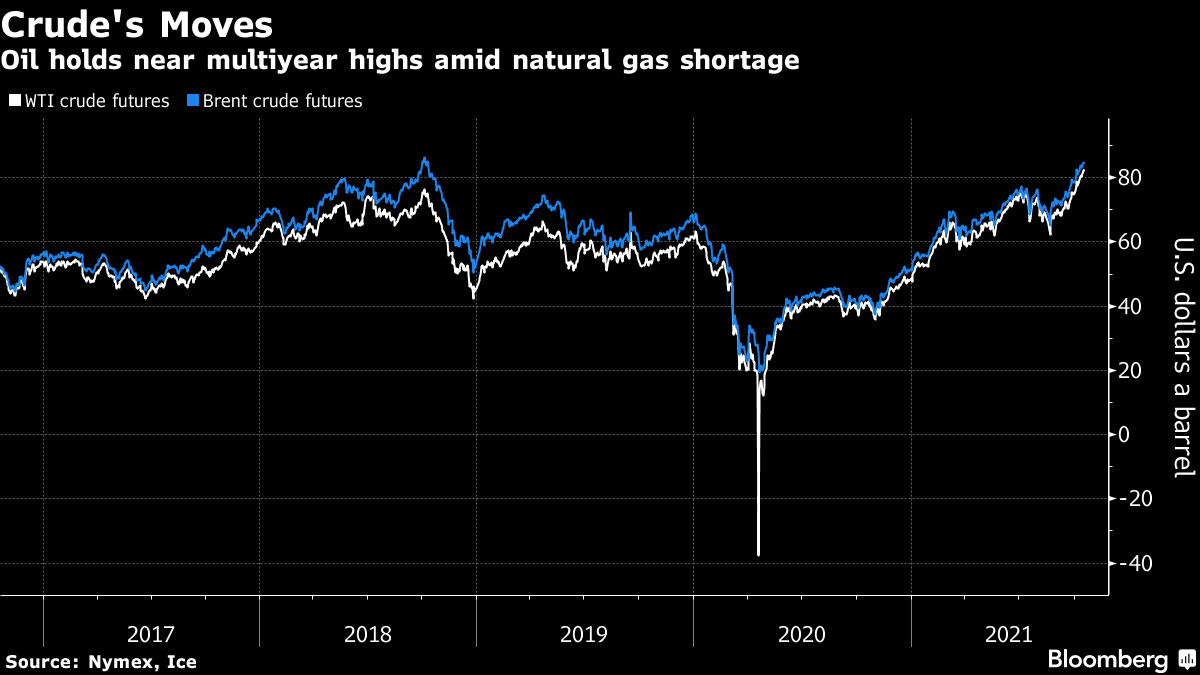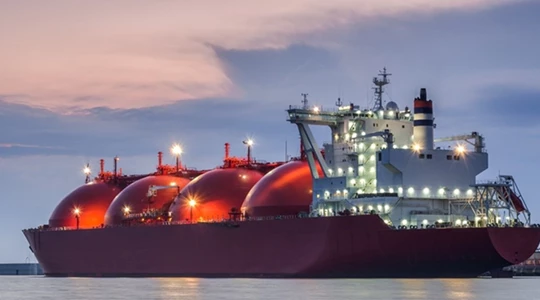Oil Pares Gains With High Fuel Prices Shaking Demand Confidence
(Bloomberg) -- Oil pared its earlier gains after a pullback in natural gas and refined products prices pointed to a potential slowdown in demand.
Futures in New York fell were little changed Tuesday after settling at a seven-year high on Monday. Margins on making gasoline and diesel fell for the second day in a row, threatening demand for crude oil if refiners reduce production.
“Demand destruction is not a line in the sand, it’s a continuum,” said Rebecca Babin, senior energy trader at CIBC Private Wealth Management. “And we’re starting to see that demand destruction occur and as we go higher that just ratchets to more demand destruction.”

Crude has risen for the past eight weeks as the energy crisis -- prompted by shortages of natural gas and coal -- coincided with a rebound in demand from key economies emerging from the pandemic. Stockpiles are expected to draw this quarter, tightening the market. Still, the energy crunch is also weighing on industrial output industrial output in Europe and Asia.
Russia is keeping a tight grip on gas supplies to Europe and OPEC+ hasn’t pumped enough crude to meet its production target, exacerbating an existing supply crunch in energy markets.
“As long as the global energy crunch continues any oil price weakness will most likely be seen as a buying opportunity,” said Helge Andre Martinsen, senior oil market analyst at DNB Bank ASA. Coal in China reached a record high on Tuesday, a sign the energy crisis is far from over, he added.
Oil refiners in Asia are expected to raise run rates this quarter, partly in response to extra demand from the power sector for petroleum products like gasoil and fuel oil, although China’s plants cut rates in September. In a further sign of Asian demand, Russia ESPO crude for loading on the country’s eastern coast recently sold at its strongest premium to the Dubai benchmark since January last year.
Russia has signaled it won’t go out of its way to offer European consumers extra gas unless it gets approval to begin shipments through the Nord Stream 2 pipeline. Gazprom PJSC’s gas exports to its main markets fell in the first two weeks of October to the lowest since at least 2014 for the time of year.
“Weather will also determine if oil prices continue their upward ascent,” said Louise Dickson, senior oil markets analyst at Rystad Energy. “A cold weather event in North America would hit the oil market in the marginal supply jugular, as growth in U.S. shale is still a much-needed production support amid the energy crunch.”
More stories like this are available on bloomberg.com
©2021 Bloomberg L.P.
KEEPING THE ENERGY INDUSTRY CONNECTED
Subscribe to our newsletter and get the best of Energy Connects directly to your inbox each week.
By subscribing, you agree to the processing of your personal data by dmg events as described in the Privacy Policy.
More gas & LNG news

GE Vernova Sees ‘Humble’ Wind Orders as Data Centers Favor Gas

China’s Oil Demand May Peak Early on Rapid Transport Shift

Qatar Minister Calls Out EU for ESG Overreach, Compliance Costs

Chevron Slows Permian Growth in Hurdle to Trump Oil Plan

After $2.5 Billion IPO Haul, Oman’s OQ Looks at More Share Sales

ADNOC signs 15-year agreement with PETRONAS for Ruwais LNG project

Woodside signs revised EPC deal with Bechtel for Louisiana LNG

Vitol, Glencore Eye New Fortress’ Jamaica LNG Assets

ADNOC Gas awards design contract for gas processing facilities at Bab Gas Cap
















